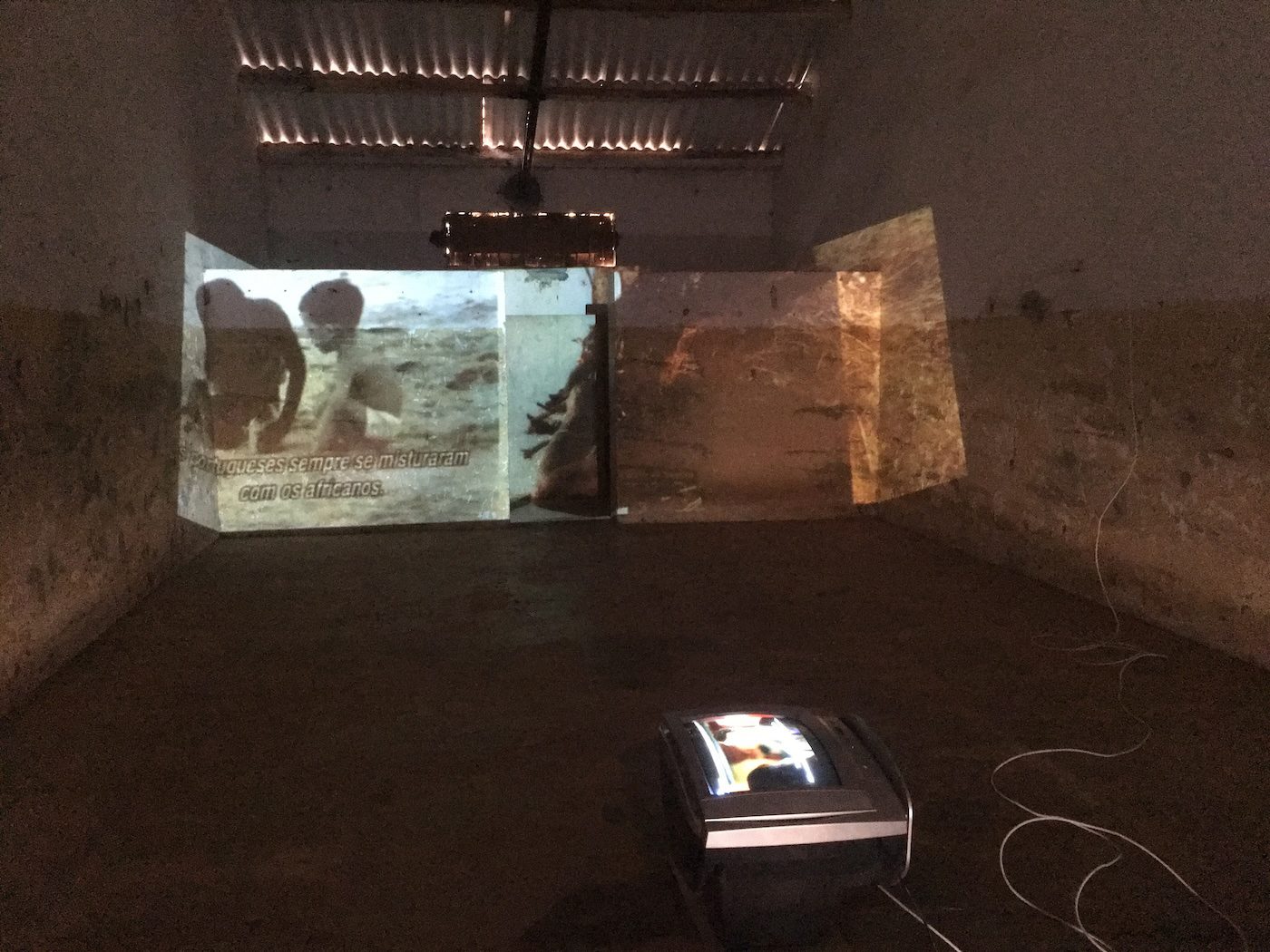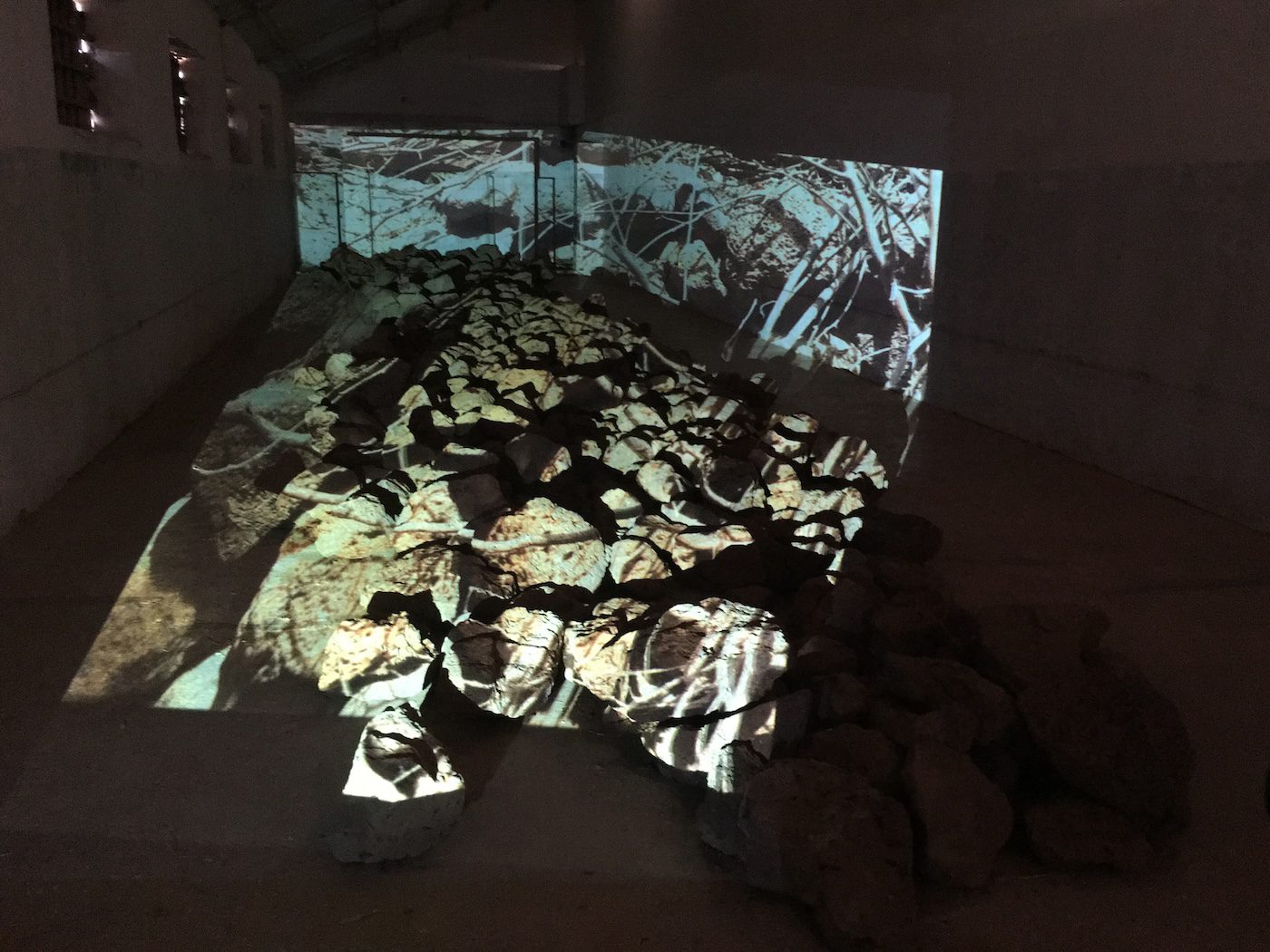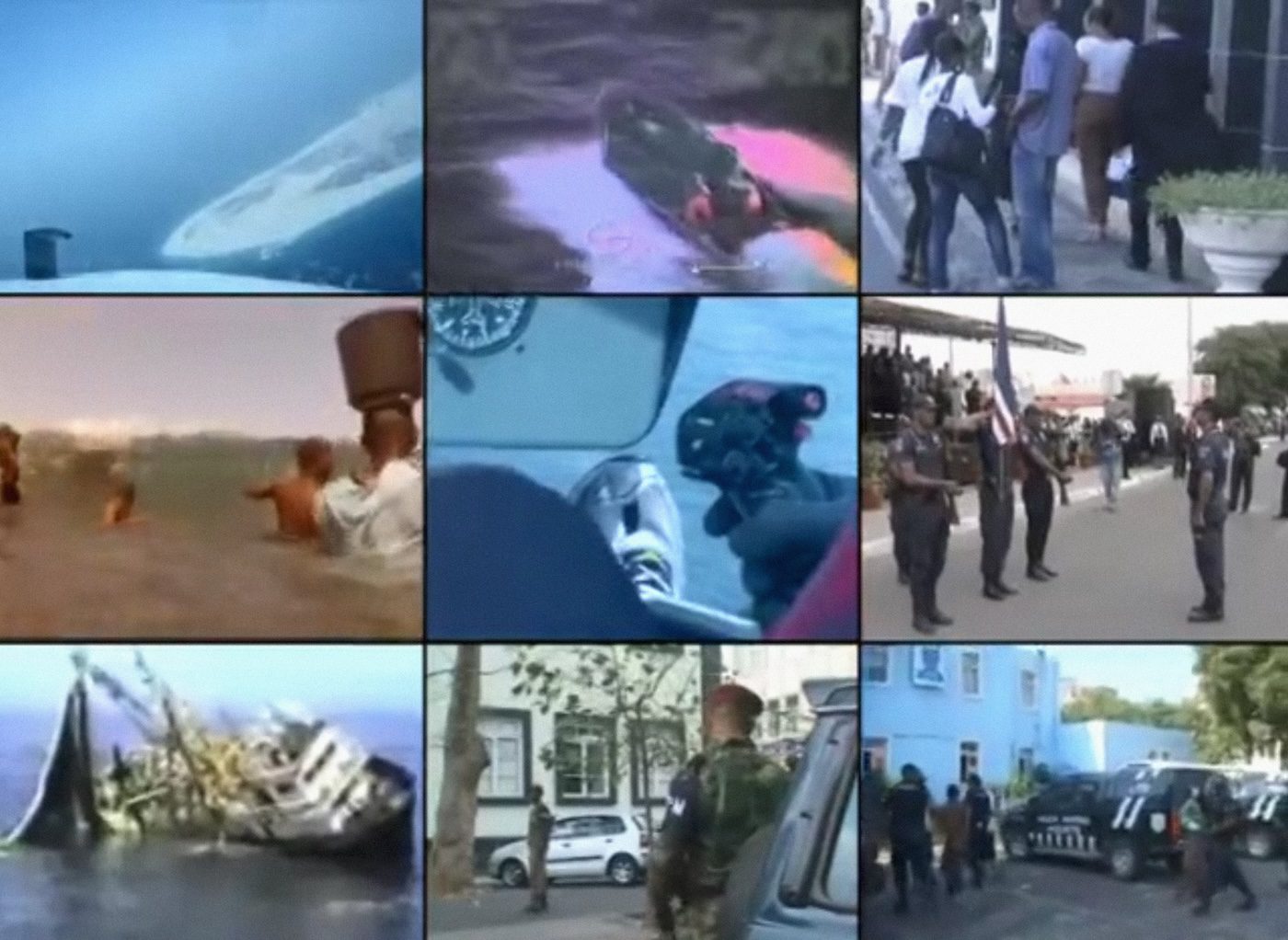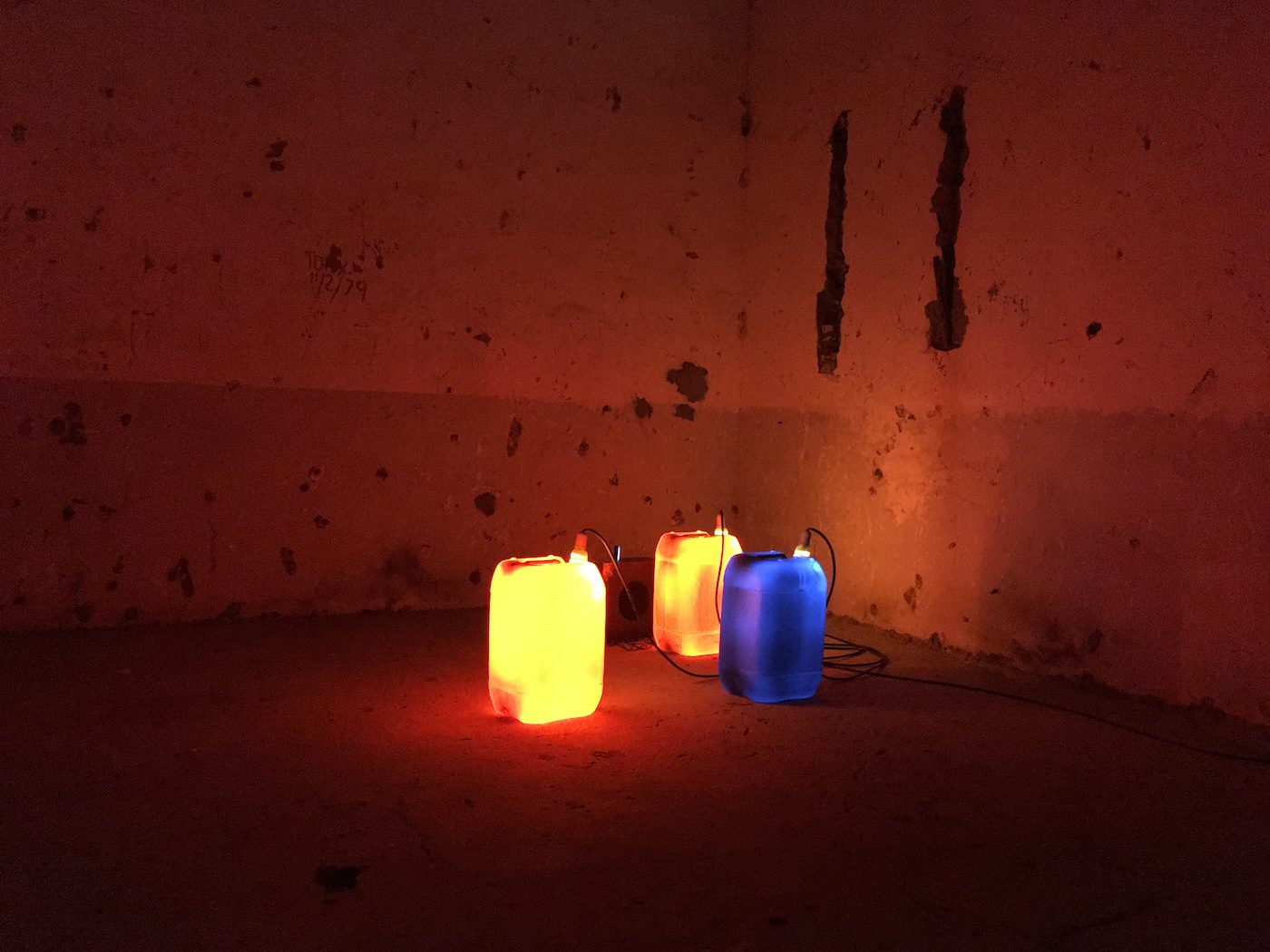Ana Nolasco explores César Schofield Cardoso’s work, examining Cabo Verde’s colonial past, memory, and the impact of global capitalism on identity.

César Schofield Cardoso, Perpetual Cycle from Rust series, 2017. Courtesy the artist.
Portugal is home to one the largest Afro-diasporic communities in Europe, related to Lusophone countries such as Cabo Verde, Angola, São Tomé and Príncipe, Guinea-Bissau, and Mozambique. As the original western colonial empire, Portugal set a blueprint for today’s global inequalities. It is this and the persistent crisis the country faces that condition the international visibility of Portugal’s Afro-diasporic community. This series, “Afterlives of History,” spotlights its artists in all their variety and complexity. Following two features on Filipa Bousset and Unidigrazz by Guilherme Vilhena Martins, this installment by Ana Nolasco focuses on the work of César Schofield Cardoso.
Born in 1973, Cape Verdean artist César Schofield Cardoso belongs to a generation of artists using hypermedia to mine collective memory, explore multiple visual languages, and question the aspirations of modernity, thereby laying the ground for a recovery of displaced African cultural heritage. Working with photography, programming, and film, his approach combines poetic research and critical inquiry into the de-territorialized identity of contemporary Cape Verdean society.

César Schofield Cardoso, Surrounding Sea from Rust series, 2017. Courtesy the artist.
The nation’s colonial past involved the suppression of artistic expression, with efforts towards creating truly Cape Verdean art emerging only post-Independence in 1975, driven by the re-Africanization strategy promoted by the African Party for the Independence of Guinea and Cape Verde. In recent years, however, a shift towards a “creoleness” discourse has gained momentum, linked to market expansion and upward mobility. This particular creole identity, which can be traced back to the movement around the literary review Claridade, founded in 1936, presents Cape Verdeans as mediators between European and African cultures, reflecting racist nineteenth-century ideologies. Schofield Cardoso critiques the adoption of external cultural paradigms in works like the video installation Repúblika (2014), which addresses the political legacy of anti-colonial leader Amílcar Cabral alongside broader concerns like immigration and resource exploitation in Cape Verde.

César Schofield Cardoso, Repúblika, 2014. Video still. Courtesy the artist.
Memory is central to Schofield Cardoso’s practice, which often juxtaposes past and future in such a way as to invite us to rethink forgotten histories and their relevance to contemporary struggles. The Rust series (2017) focuses on colonial amnesia, for example, while Beton (2017) and Espaços Vacilantes (Reluctant Spaces, 2019) examine how the strategies of global capitalism have shaped Cape Verdean identity.
Rust, part of the A Glimmer of Freedom project curated by Márcia Bruno at the former Tarrafal penal colony in 2017, comprised three site-specific multimedia pieces: Surrounding Seas, Perpetual Cycle, and Hard Water. In Surrounding Seas, projections, sounds, and photographs created an immersive environment, recalling stories of survival and the 1947–48 famine. Perpetual Cycle placed archival colonial images of forced labor and exploitation next to present-day scenes of struggle, questioning the persistent Portuguese colonial myth of a genuinely multiracial nation. Hard Water, with illuminated jerry cans and an accompanying audio installation, centered around Cape Verdean women’s daily struggle for water.

César Schofield Cardoso, Hard Water from Rust series, 2017. Courtesy the artist.
The three installations mapped intersecting challenges for Cape Verdeans past and present: the racialized population’s everyday quest for sustenance amid geographic isolation and environmental aridity, exacerbated by the violent resource exploitation of the powerful. Schofield Cardoso’s evocation of the historical moments aligns with Paul Ricoeur’s theory of the “ideologization of memory,” that is, how collective amnesia is manipulated by systems of power and must be counteracted by revisiting and rewriting history: the duty of truth toward the past. The crashing waves, sepia-toned photographs, and murmured prayers in Surrounding Sea reactivate archival memories to confront us with the layered temporalities of Cabo Verde.
Rust’s reanimation of traumatic memories passed down from previous generations works by engaging viewers on tactile and emotional levels through elements such as rocks, on to which images are projected in Surrounding Seas, and the glowing jerry cans in Hard Water.

César Schofield Cardoso, Espaços Vacilantes, 2019. Courtesy the artist.
Beton, exhibited with the Espaços Vacilantes series at Galeria ATC in Tenerife in 2023, contrasts the aspirations of modernity with the harsh realities of “progress.” The video juxtaposes images of concrete construction with workers’ contemplative pauses, challenging the linear temporality of neoliberal development. The omnipresent concrete symbolizes a European modernity foreign to Cape Verde’s realities, while the slow rhythm of the workers reflects a rejection of capitalist efficiency.
In Espaços Vacilantes, Schofield Cardoso presents stark, decontextualized photographs of unfinished or precariously inhabited buildings in the Bairro da Cidadela, Praia. These structures, initially promoted as part of a “city of the future,” stand as metaphors for a Cape Verdean identity fractured by external models. The images recall the aesthetic of the New Topographics school, a group of mainly US landscape photographers brought together in the 1970s in New York, in which desolate manmade spaces evoke a sense of strangeness. Unlike abandoned ruins, however, Schofield Cardoso’s images of inhabited buildings provoke discomfort due to their monolithic appearance and claustrophobic framing, reflecting Cape Verde’s social fragmentation.

César Schofield Cardoso, Beton, 2017. Film still. Courtesy the artist.
These threshold spaces suggest a population caught between a disconnected elite class and imported identity models shaped by external powers. Schofield Cardoso’s photography highlights the ontological uncertainty of this fractured society, revealing the ruins of individual aspirations created by western modernism and neoliberal governmentality. The “reluctance” present in the series’ title and in the buildings themselves reflects a broader hesitation in defining a unified national identity.
Schofield Cardoso thus challenges us to engage with the fractured histories and uncertain futures that shape Cape Verdean society. His work invites a dialogical process, highlighting contradictions and fostering critical reflection without offering easy resolutions, prompting both personal and collective reflection on the complexities of Cape Verdean identity in a postcolonial, globalized world.
This text is an abbreviated version of “Dialogical Art: Cartographies of Memory and Affection in the work of César Schofield Cardoso,” published in the book Atlantica: Contemporary Art from Cabo Verde, Guinea Bissau, São Tomé and Príncipe and Their Diasporas, Archive Books, 2021.
Ana Nolasco holds a post-doctorate in art and design from IADE – European University. She has a PhD and a master’s degree in aesthetics and philosophy of art from the Faculty of Letters of the University of Lisbon, and a bachelor’s degree in fine arts – painting from the Faculty of Fine Arts of the University of Lisbon. She teaches art theory at the School of Arts of the University of Évora and at the Polytechnic Institute of Lisbon. She is the author of several books and articles.
„AFTERLIVES OF HISTORY"
C&’s second book "All that it holds. Tout ce qu’elle renferme. Tudo o que ela abarca. Todo lo que ella alberga." is a curated selection of texts representing a plurality of voices on contemporary art from Africa and the global diaspora.
More Editorial